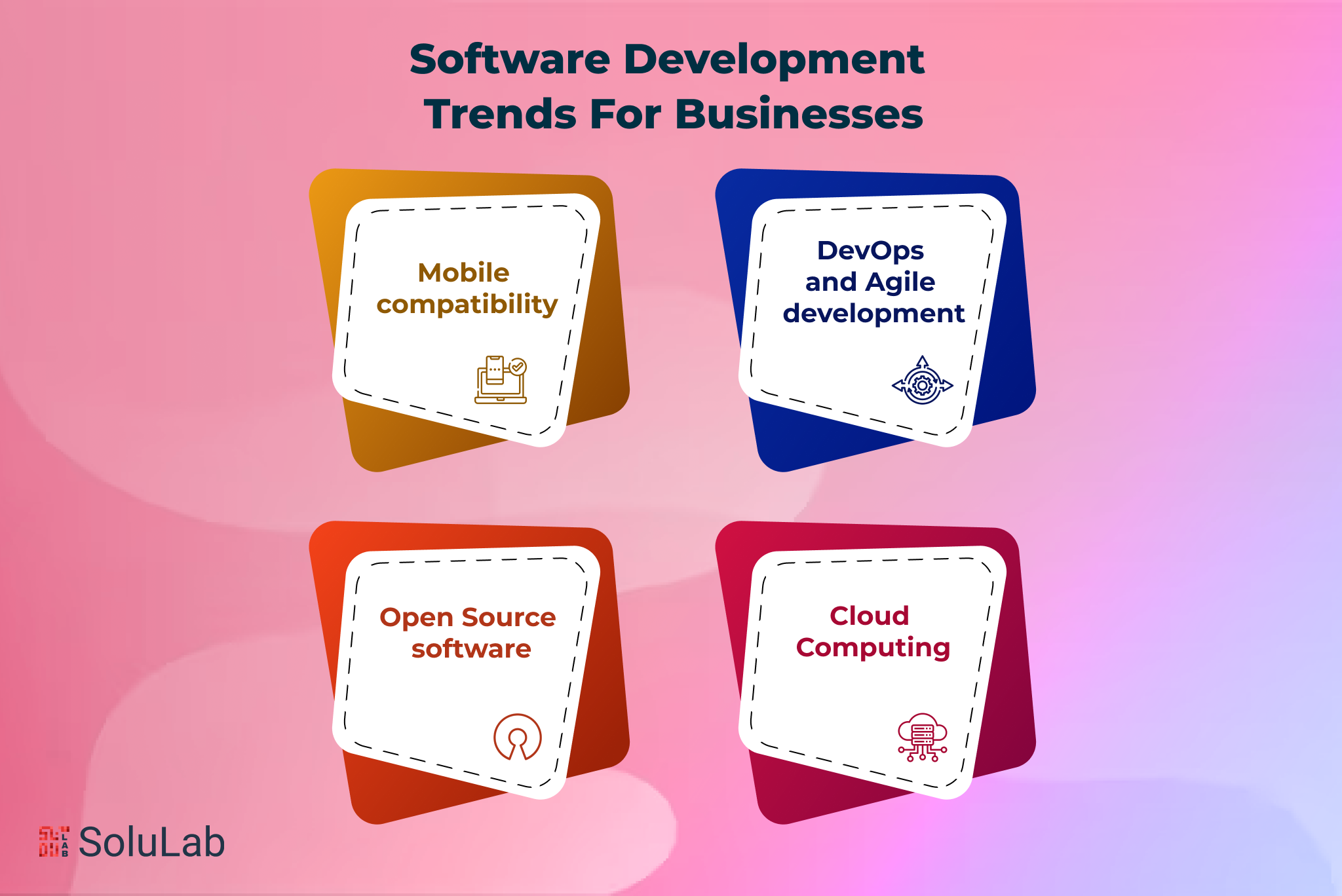
Turning Australia into a Regional Tech Hub, significant research released by the Tech Council of Australia (TCA) outlines prospects for Australia’s tech sector to expand by capitalizing on its advantages. Numerous custom software Australia tools that enable short development cycles and a streamlined procedure have aided in this progress. These procedures have assisted the sector in taking advantage of the expanding demand for software development services worldwide.
“2.3% of the world’s tech unicorns ($1Bn+ companies) have already been founded in Australia, even though our global share of GDP is just 1.6%. By better understanding and focusing on our relative strengths, Australia can create and attract more global companies, create thousands of new jobs, and truly turn Australia into a leading regional tech hub,” said Kate Pounder, CEO of TCA.
The custom software development Australia industry is steadily moving toward becoming a more open, adaptable, and standardized industry. This article examines recurring patterns & trends in software development that help upscale your business.
Software Development Trends To Adopt
The potential of the software has no inherent bounds. Yet, due to the lack of physical limitations, software systems can easily become very complicated, challenging to comprehend, and expensive to modify. Some of the most advantageous working conditions for remote developers are found in Australia.
Australia is rated favorably on several critical metrics, including its robust IT businesses, cutting-edge technologies, and reasonable tax structure. Numerous software systems range from straightforward embedded systems to intricate global information systems. As various software types require different methodologies, there are no standard notations, procedures, or strategies for software engineering.
The development models listed below can assist you in scaling your software development company.
Mobile Compatibility
For developers, mobile compatibility is becoming a major source of innovation. Developers of software now have to make their products accessible across many platforms. Customers are increasingly emphasizing the need for software, like Google, to be mobile-friendly. Because of this, Google has changed its search algorithms to give greater weight to mobile-friendly search results.
Customers want their experiences to follow them across all of their devices. This puts further pressure on all software services to be cross-platform compatible. The software business is responding to customers and reducing market share losses to competitors who have adopted a more modern approach to their digital services in order to stay relevant in the constantly evolving digital environment.
DevOps and Agile Development
DevOps involves engineers from operations and development teams in all phases of service lifecycle management, from design to development to production support. Overseas, this technique has become more prevalent.
DevOps was created as a response to the silos and rigidity in the connection between customers and the manufacturers of goods and services. The software industry has seen a significant increase in agile product development. Agile has had a substantial role in the development of DevOps. Sprint-style work cycles, which are gradual and iterative, aid teams in adapting to uncertainty.
The Manifesto for Agile Software Development states the following are its basic values:
- Persons and interactions, rather than procedures and tools
- Functional software above thorough documentation
- Consumer involvement during contract negotiations
- Responding to change by following a plan
Collaboration between development and operations staff at all stages of the development lifecycle adds value as another interconnected emerging trend recognizes. The agile work principles are more of an extension of the collaboration between development and operations staff to include external stakeholders who will receive the product during the development process.
Continuous improvement and a sustainable pace for all stakeholders are fostered by DevOps. Most of the time, this includes using Infrastructure as Code, which lets you design, implement, and deploy an app’s infrastructure using the best software practices.
Developers are drawn to this because it facilitates rapid deployment and encourages the use of Everything as a Service (XaaS) and cloud computing. Adobe is a good illustration of this new approach.
Read Also: Key Metrics & KPIs To Upscale Software Development
Open Source Software
Open source has been encouraged to be used more widely in public services by Indonesia, the United Kingdom, Denmark, and the Netherlands. Apps can be more easily standardized across departments or agencies because open source is based on open standards that are available to the public.
Open source makes it possible for any vendor to create various custom software solutions that are compatible with one another. As a result, open source can potentially be a significant driver of government transformation. Governments can tailor these apps with a high degree of customization to their needs by adopting open source and open standards. This is especially true when supporting web and mobile services for digital citizens are emerging technologies like big data.
Cloud Computing
Data is stored, managed, and processed by a web of remote servers hosted on the internet in cloud computing. Cloud computing as a term has become synonymous with computing because it has become so ingrained in software platform solutions for the business sector. The growing diversity of services available via cloud computing is known as Everything-as-a-Service (Xaas), and it includes Infrastructure as a Service (IaaS), Software as a Service (SaaS), and Platform as a Service (PaaS).
Cloud computing is responsible for ICT services that are up to 40% more cost-effective for small and medium businesses that adopt these innovations than those that run their own ICT infrastructure. Some aspects may have fallen behind, including security, given the speed with which cloud computing is being developed and used.
With cloud-first policies, security is a major concern, especially when all data is held by the hosting company. A hybrid cloud in which a smaller private cloud is used for faster, more sensitive tasks and a larger public cloud for larger, more complex ones is driven by this concern about security.
Hiring Trends For a Software Development Company
Australia’s improved exchange environment has improved its position in the global outsourcing market. Hybrid is a new technology solutions outsourcing model that combines offshore and onshore consulting services to simplify communication and collaboration at lower costs.
Today, Australia’s main revenue comes from outsourcing. It is now one of the main forces behind Australia’s economic growth, the creation of jobs, the use of the country’s natural resources, and other innovations.
Australia’s strong technological assets, such as its extensive coastline and abundant hydrographic resources, further support the rising demand for software development activities. Additionally, the country is known for its highly educated population and well-organized technical education system.
Like outsourcing, the hybrid model helps reduce overall development costs and communication gaps. In this scenario, the business’s accounts manager or PM is based in the same country as the company, but they have a remote development team or offshore technical experts.
When looking for the best software development company Australia partner, two of the most common approaches businesses pursue are the nearshore and offshore hiring models. However, in order to guarantee the actual model for your custom development project, you must thoroughly evaluate all crucial factors. Australia’s software industry is expanding rapidly in response to the rising international demand for goods and services. As a result of the numerous cost-effective and high-value solutions offered by offshore outsourcing, Australia’s IT businesses are placing a greater emphasis on it.
Software Distribution Trends to Adopt

The Australian software development industry relies heavily on exports; about half of their software development products are produced for export, with the remaining half produced for the home market. The following distribution trends contribute heavily to the growth of the custom software industry:
Subscription-Based And Renting Models
A significant transformation can be seen in the software development industry right now. Renting software and services rather than purchasing them is becoming increasingly customary in the private sector. Customers can have the flexibility to shop around rather than committing to lengthy locked-in contracts by renting software or infrastructure, which supports today’s more agile work environment.
According to reports, this has had a flow effect on developers, with quality sacrificed for timeliness. This has adversely affected consumers, who have become less patient while waiting for software delivery or error correction. In the new environment, developers can continue providing updates to improve quality, which is an acceptable sacrifice.
Renting is the most common way to get the software, data centers, software development staff, and computer infrastructure. Subscription-based procurement models typically include software updates and foster an environment in which a strong relationship is essential to the upkeep and uptime of a software product. This shift has allowed customers to focus their funds on other aspects of their business.
Read Also: How to Choose The Right Software Development Methodology For Your Business
The software development company’s revenue stream and business procedures are also impacted by this development. Instead of relying on large contracts with high upfront costs, developers are turning to subscriptions, which provide a more stable revenue stream.
Sales teams, channel strategies, and delivery partners will all need to be completely overhauled in order to sell software on a subscription basis. Even though this change has increased developers’ responsibility for maintaining a positive relationship with customers, both stakeholders have benefited. Because of this, consumers can now use software solutions that were previously more expensive for smaller businesses. It has provided a more adaptable and scalable software solution that eliminates the hassle of being locked into a solution for an extended period of time.
Mobile-Website Apps
Software developers are moving toward creating content in HTML format due to an increase in demand for cross-platform access. The developers can offer users the ability to access it on any platform, be it a web browser, iOS, Android, etc., because of this. As a result, developers no longer have to rewrite content in a different software language to provide a solution for users on various platforms.
The HTML layer is getting faster over time and runs on faster chips. Hence, developers’ solutions will be able to compete with native mobile apps in terms of interactivity and complexity. Native apps, according to some developers, are the only way to get/create applications with a lot of complexity.
XaaS
A subset of cloud computing, everything as a service (XaaS) lets software developers deliver services remotely. Software, infrastructure, and platforms are among the core components of cloud computing that have been referred to as “a service.” Software as a Service (SaaS), which is anticipated to extend at a compound annual rate of more than 20% throughout this decade, is the most prevalent and successful example.
Businesses are moving toward XaaS because of its scalability, multi-tenancy, device independence, low entry requirements, and minimal capital expenditures. The most difficult challenge for businesses is adapting their internal culture and procedures to the agile XaaS model. The way developers work is also being altered by this delivery method.
Concluding Remarks
Australia has a lot of skilled and semi-skilled workers with good education and post-secondary training. Its burgeoning custom software development industry relies heavily on software engineers and developers.
However, there are no universal software engineering notations, approaches, or techniques because distinct software types necessitate different approaches. I hope you now have a better understanding of the software development industry and how to grow your business in Australia specifically.
In order to guarantee that your project is ideal, our custom software development services will provide you with the appropriate set of skills, service packages, and additional benefits, such as continuous maintenance for project upgrades, scalable teams with solid project management and tracking tools, skilled QA developers, software testing, and maintenance services. Having SoluLab, as a custom software development company will undoubtedly improve your project’s success. Contact us to learn more about our software development services!
FAQs
In Australia, how much does custom software development cost?
A forty-hour production cycle is a standard for project pricing in Australia and around the world. Due to a different production cycle, prices differ in the UK. In addition, the number of employees working on a given project has an impact on the pricing structure. Developers are required to pay a commission fee in South American nations that are significantly lower than the prices in Australia or the UK.
How do I select a custom software developer?
Personal recommendations are the most effective method for finding successful new hires (source). To help you narrow down your options, here is a list of qualities to look for in a software developer:
a. Examine past projects and price structures
b. Examine the suggestions made by customers
c. Conceptual proof knowledge of current developmental trends
d. Integration and communication skills
How do I validate my business concept?
To begin, an entrepreneur must have a business plan demonstrating the business idea’s viability. By working with organizations that provide such services, this can be accomplished. Use business consultancies to validate the business idea with clear and concise business plans. If a business idea is not yet sustainable, such agencies will also provide suggestions on how to improve it.





